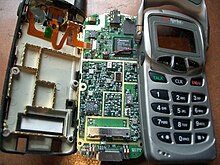This article has multiple issues. Please help improve it or discuss these issues on the talk page. (Learn how and when to remove these messages)
|

Interim Standard 95 (IS-95) was the first digital cellular technology that used code-division multiple access (CDMA). It was developed by Qualcomm and later adopted as a standard by the Telecommunications Industry Association in TIA/EIA/IS-95 release published in 1995. The proprietary name for IS-95 is cdmaOne.
It is a 2G mobile telecommunications standard that uses CDMA, a multiple access scheme for digital radio, to send voice, data and signaling data (such as a dialed telephone number) between mobile telephones and cell sites. CDMA transmits streams of bits (PN codes). CDMA permits several radios to share the same frequencies. Unlike time-division multiple access (TDMA), a competing system used in 2G GSM, all radios can be active all the time, because network capacity does not directly limit the number of active radios. Since larger numbers of phones can be served by smaller numbers of cell-sites, CDMA-based standards have a significant economic advantage over TDMA-based standards,[citation needed] or the oldest cellular standards that used frequency-division multiplexing.
In North America, the technology competed with Digital AMPS (IS-136), a TDMA-based standard, as well as with the TDMA-based GSM. It was supplanted by IS-2000 (CDMA2000), a later CDMA-based standard.